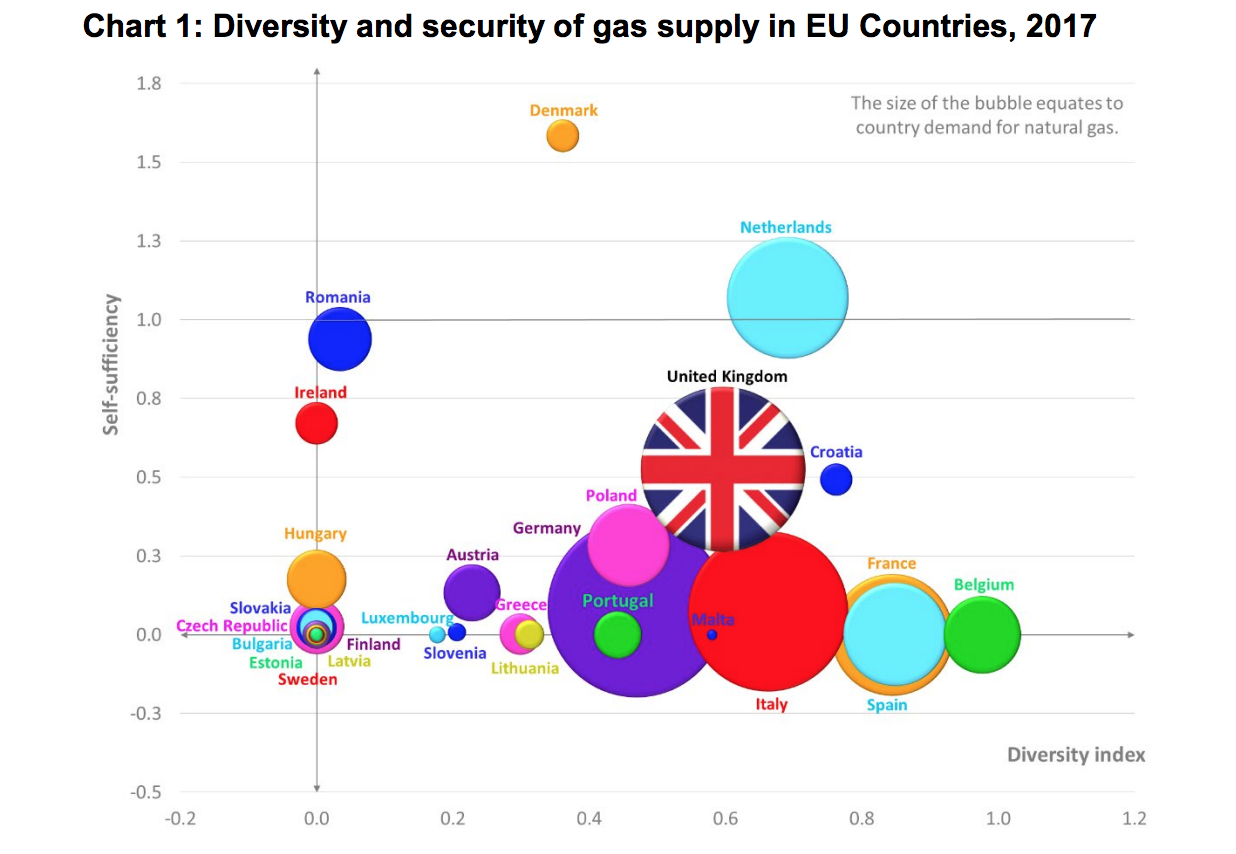Report Illustrates Sharp Contrasts In EU Gas Supply Security
The EU has low self-sufficiency in gas, but does better in terms of diversity of supply, a report issued March 28 by the UK government concludes. That said, the data illustrates sharp contrasts between different regions, with central and eastern Europe (CEE) struggling on both counts.
Based on 2017 statistics, the report says the EU could on average have met just over a fifth of demand through indigenous production. Total EU indigenous gas production was 132bn m³; total demand was 485bn m³.
This meant that domestic production was supplemented via imports from pipelines (70%) and LNG (8.4%) to meet remaining demand. Germany was the largest consumer at nearly one-fifth of the total. The UK took a 17% share.
“Most countries in the EU have a diverse range of import sources, overall receiving pipeline gas from 18 countries and LNG imports from 12 countries,” the report reads.
The EU sourced 37% of its total imports from Russia in 2017, and at 23% Norway was the second largest supplier. Roughly 10% of EU imports are sourced through the Maghreb–Europe, Medgaz, Trans-Mediterranean, Galsi and Greenstream Pipelines from Northern Africa. The EU then imports smaller quantities from an array of sources, with 13 countries being included in “other” category.
This “clearly display[s] the diversity of EU sources, of which the majority is transported through pipelines,” the report insists.
However, while eighteen EU countries imported gas from Russia, it was the sole source for seven. “The current legacy pipeline infrastructure (built during the USSR) means that CEE countries receive almost all their supply from Russia,” the authors note.
A chart ranking the diversity and security of supply shows that the EU’s CEE states are significantly more exposed than those to the west, especially in terms of diversity.
There are five countries with an overall supply index of zero (Cyprus, Estonia, Finland, Latvia and Sweden). A score of zero indicates that the country has no indigenous production and receives gas from a single import source. For Estonia, Finland and Latvia this single import source was Russia, whilst Sweden only imported from Denmark. Cyprus receives a default diversity index of 0 but as described they also did not have any consumption.
Self sufficiency due to domestic production is also very weak in the region, although Romania is an outlier thanks to its relatively large gas reserves.




